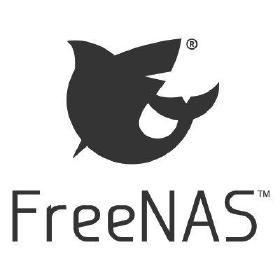
As the year draws to an end, I always look back and wonder how the year has passed by so quickly. As I get older, time seems to be moving so much faster, or at least it feels that way. I thought it would be interesting to look back on this blog I posted about how I used my FreeNAS server, as quite a lot has changed over the last 12 months.
The first thing hasn’t changed that much, and that’s the version of FreeNAS I’m running. I updated once during the year, which I blogged about here, but I’ve been running the same version since then. The version I’m running (9.10.1-U4) is the last that supported VirtualBox, which I use to run CrashPlan (in a CentOS 6.9 VM) and OnlyOffice (in an Ubuntu 16.0.4 LTS VM). I also use it for running other VMs to play around with stuff, and while FreeNAS now supports virtualisation using bhyve, it’s still relatively new, and there’s not a massive amount of support information out there. It also appears limited regarding the networking capability, and as I like to be able to bridge each of my VMs giving them their own IP stack, I’ve decided to stick with VirtualBox on FreeNAS. I’ll need to upgrade at some point, possibly sometime in 2018, but by then hopefully, some of these issues will have been resolved, and the jails will also have been updated to use iocage rather than the current warden management tool.
Some other things have changed much more, and that was the point of this blog!
WordPress
At the beginning of the year, I’d just started this blog after playing around with WordPress in a jail running a FEMP stack, which I was also using for playing with lots of other stuff (Drupal, Joomla, Lychee, Zenphoto to name but a few). Midway through the year, I decided to create a new jail specifically for WordPress, and also use that as an opportunity to upgrade the version of PHP it was running from 5.6 to 7.0. I blogged about that here, and it taught me a few things about moving subdomains, specifically the impact on search engines. More recently, I created another new WordPress jail, which didn’t change the underlying FEMP stack, but did consolidate all of my websites. The previous one was destroyed, so I now have the new one serving this blog and a couple of other sites, and the original jail still in use for development stuff. I’m thinking of doing a more detailed blog about WordPress, so will link it here if I do.
emby
Another significant change was the move away from Plex and my move to emby, which again I blogged about here at the time. I’m not going to go through all the details back here, but I will mention that my Plex jail is still running, although sees little internal use and isn’t accessible outside my LAN. emby has proved to be a capable replacement, and while I still miss some things from Plex, emby does other things better, which I blogged about more recently here.
ownCloud
This probably hasn’t changed all that much, and is still running in the jail it was at the start of the year, so running a FreeBSD 9.3 template. ownCloud has been updated a few times, and I also created a VM jail to run OnlyOffice which provides full document collaboration in a very Microsoft Office stylee. I blogged about that here, so again won’t go into much detail. At some point I will need to rebuild this jail, but not until I’ve updated to some version of FreeNAS 11x. I also decided to ditch my NextCloud jail that I created at the time ownCloud split into 2. ownCloud still does what I need, and having to update both just seemed like a complete waste of time. If I ever switched, I’d need to re-sync all my data, but that’s probably easier than trying to main two versions when I’m only using one.
CrashPlan
CrashPlan has been pretty problem free since I switch from trying to run in a FreeBSD jail to running on a CentOS VM. The big news in 2017 was the fact that CrashPlan was stopping support of their Home product in 2018, which I covered in detail here. The Small Business version was a painless upgrade, and it’s been working fine ever since. I believe there’s a major update due before the end of the year, so this might change…
SSL Reverse Proxy
This is probably one of the most significant changes, as at the beginning of the year I wasn’t even running a reverse proxy, and trying to keep my SSL certificates up to date was a complete pain in the butt! Having all external access coming into a single point, and managing all the security there has been a revelation, and only a couple of months ago I had my first certificate automatically update! This really was a game changer and made everything much more secure, easier to administer, and saving a huge amount of time and effort.
Home Automation
I created a couple of jails this year for playing around with Home Automation, although to be honest didn’t get much beyond that. I built one for Home Assistant and one for HA Bridge and my aim at the time was to try and control 2 TP-Link HL110 Smart Plugs using my Harmony Elite remote control. I have 6 Philips Hue bulbs in my lounge, along with 2 HL110 plugs which control some other lights. I can control them all using Alexa, and can also control the Hue bulbs using the remote. I can’t control the HL110 plugs using the remote, and still can’t. I kind of lost interest with it, as it looked a little complicated, but both jails are still sat disabled, so at some point, I’ll get back to trying to fix this as it doesn’t look like Harmony or TP-Link are going to do it for me!
VMs
I don’t think my use of VirtualBox jails has changed that much, in that I still have 4 (VM1-4) and their use is pretty similar. VM1 runs Windows 10 for a Java-based application, but is currently disabled as the application needs quite a bit of RAM to run, so it’s only fired up when I need it. VM2 is used for various Linux distributions, but is on 24/7 as it’s currently running Ubuntu 16.0.4 LTS that I’m using to run OnlyOffice for use with ownCloud. VM3 is used for playing with FreeBSD jails, including testing of new releases of FreeNAS. I used it to play with FreeNAS 10, which became Corral, and I currently have a fairly recent version of 11.1 betas, although not being able to run VMs within a VM means it doesn’t allow me to test FreeNAS 11 as I’d like. VM4 is running CentOS 6.9 and is used for CrashPlan. I love how this all works, and will be sad to loose VirtualBox when I finally have to upgrade, but hopefully, bhyve will do a similar job by the time I do.
VPN
Haven’t changed anything here, and I’m still running OpenVPN in a jail. I did recreate it using a FreeBSD 10.3 template rather than the 9.3 template it was using at the beginning of the year, but otherwise, the configuration is identical. Nothing complicated, but it allows me to access my FreeNAS server remotely and securely using a VPN. Another really useful service, and not one I’d imagined I’d be able to use my NAS for when I started with FreeNAS.
DNS
This one hasn’t changed much either, other than being rebuilt in a 10.3 template. I’d stopped using it for a while, and when I rebuilt it simplified the configuration, so it is just doing reverse caching and not trying to resolve any local domains (e.g. owncloud.local) with the appropriate local IP address, which is how I’d failed to configure the old one. I might eventually try that again, but for the time being, it just speeds up my DNS lookups to my frequently used sites ever so slightly!
And that’s about everything I think? Well, apart from its main purpose of storing all my important data! I would be genuinely lost without it, and it always amazes me how much more I can do with my FreeNAS machines that I couldn’t with the Netgear NAS it replaced all those years ago. I suspect in another 1-2 years, I’ll be looking to build another with more storage capacity and RAM, but for now, it works perfectly for my requirements, and has never once let me down.
Thanks, iX Systems!

Trackbacks/Pingbacks